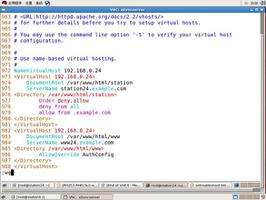vue单页面引入CDN链接

不想在index.html文件中全局引入CDN资源,那么如何在Vue单文件组件中引入?下面来瞅瞅~
虚拟DOM创建
Vue 通过创建一个虚拟 DOM 来追踪自己要改变的真实 DOM
什么是虚拟DOM?
return createElement('h1', this.blogTitle)createElement实际返回的是createNodeDescription而非实际上的DOM元素,因为它所包含的信息会告诉Vue页面上需要渲染什么样的节点,包括及其子节点的描述信息。这样的节点称为“虚拟节点 (virtual node)”,也常简写为“VNode”。“虚拟 DOM”是整个 VNode 树(由 Vue 组件树建立起来)的称呼。
createElement函数参数
在createElement函数中可以使用模板中的功能,它接收的参数有:
// @returns {VNode}createElement(
// {String | Object | Function}
// 一个 HTML 标签名、组件选项对象,或者
// resolve 了上述任何一种的一个 async 函数。必填项。
'div',
// {Object}
// 一个与模板中属性对应的数据对象。可选。
{
// 与 `v-bind:class` 的 API 相同,
// 接受一个字符串、对象或字符串和对象组成的数组
'class': {
foo: true,
bar: false
},
// 与 `v-bind:style` 的 API 相同,
// 接受一个字符串、对象,或对象组成的数组
style: {
color: 'red',
fontSize: '14px'
},
// 普通的 HTML 特性
attrs: {
id: 'foo'
},
// 组件 prop
props: {
myProp: 'bar'
},
// DOM 属性
domProps: {
innerHTML: 'baz'
},
// 事件监听器在 `on` 属性内,
// 但不再支持如 `v-on:keyup.enter` 这样的修饰器。
// 需要在处理函数中手动检查 keyCode。
on: {
click: this.clickHandler
},
// 仅用于组件,用于监听原生事件,而不是组件内部使用
// `vm.$emit` 触发的事件。
nativeOn: {
click: this.nativeClickHandler
},
// 自定义指令。注意,你无法对 `binding` 中的 `oldValue`
// 赋值,因为 Vue 已经自动为你进行了同步。
directives: [
{
name: 'my-custom-directive',
value: '2',
expression: '1 + 1',
arg: 'foo',
modifiers: {
bar: true
}
}
],
// 作用域插槽的格式为
// { name: props => VNode | Array<VNode> }
scopedSlots: {
default: props => createElement('span', props.text)
},
// 如果组件是其它组件的子组件,需为插槽指定名称
slot: 'name-of-slot',
// 其它特殊顶层属性
key: 'myKey',
ref: 'myRef',
// 如果你在渲染函数中给多个元素都应用了相同的 ref 名,
// 那么 `$refs.myRef` 会变成一个数组。
refInFor: true
},
// {String | Array}
// 子级虚拟节点 (VNodes),由 `createElement()` 构建而成,
// 也可以使用字符串来生成“文本虚拟节点”。可选。
[
'先写一些文字',
createElement('h1', '一则头条'),
createElement(MyComponent, {
props: {
someProp: 'foobar'
}
})
]
)
渲染函数render
Vue 推荐在绝大多数情况下使用模板来创建HTML,然而在一些场景中,你需要发挥 JavaScript 最大的编程能力,这时可以用渲染函数,它比模板更接近编译器。
类型
(createElement: () => VNode) => VNode
渲染函数接收一个createElement方法作为第一个参数来创建VNode;如果组件是一个函数组件,渲染函数还会接收一个额外的 context 参数,为没有实例的函数组件提供上下文信息。
例子:假设我们要生成一些带锚点的标题
<h1> <a name="hello-world" href="#hello-world">
Hello world!
</a>
</h1>
模板实现
<anchored-heading :level="1">Hello world!</anchored-heading><script type="text/x-template" >
<h1 v-if="level === 1">
<slot></slot>
</h1>
<h2 v-else-if="level === 2">
<slot></slot>
</h2>
<h3 v-else-if="level === 3">
<slot></slot>
</h3>
<h4 v-else-if="level === 4">
<slot></slot>
</h4>
<h5 v-else-if="level === 5">
<slot></slot>
</h5>
<h6 v-else-if="level === 6">
<slot></slot>
</h6>
</script>
Vue.component('anchored-heading', { template: '#anchored-heading-template',
props: {
level: {
type: Number,
required: true
}
}
})
这里用模板并不是最好的选择:不但代码冗长,而且在每一个级别的标题中重复书写了<slot></slot>,在要插入锚点元素时还要再次重复。
render实现
<anchored-heading :level="1">Hello world!</anchored-heading>Vue.component('anchored-heading', { render: function (createElement) {
return createElement(
'h' + this.level, // 标签名称
this.$slots.default // 子节点数组
)
},
props: {
level: {
type: Number,
required: true
}
}
})
这样代码就精简很多,需要注意的是向组件中传递不带v-slot指令的子节点时,比如anchored-heading中的 Hello world!,这些子节点被存储在组件实例中的$slots.default中。
Vue单页面引入CDN链接
在了解了render函数与createElement函数的基础上,想要实现Vue单页面引入CDN链接就简单很多了。
首先采用
createElement创建不同资源类型(以js、css为例)的VNode
// js CDNcreateElement('script', {
attrs: {
type: 'text/javascript',
src: this.cdn
}
})
// css CDN
createElement('link', {
attrs: {
rel: 'stylesheet',
type: 'text/css',
href: this.cdn
}
})
然后基于上述VNode,采用
render创建函数式组件remote-js及remote-css
components: { 'remote-js': {
render(createElement) {
return createElement('script', {
attrs: {
type: 'text/javascript',
src: this.cdn
}
})
},
props: {
cdn: {
type: String,
required: true
}
}
},
'remote-css': {
render(createElement) {
return createElement('link', {
attrs: {
rel: 'stylesheet',
type: 'text/css',
href: this.cdn
}
})
},
props: {
cdn: {
type: String,
required: true
}
}
}
}
Vue单页面引入
<template> <div class="my-page">
<remote-js cdn="https://cdn.bootcss.com/jquery/3.4.1/jquery.min.js"></remote-js>
<remote-css cdn="https://cdn.bootcss.com/twitter-bootstrap/4.3.1/css/bootstrap.min.css"></remote-css>
</div>
</template>
彩蛋(=。=)
如果你觉得render函数写起来很费劲的话,就可以利用Bable插件,在Vue 中使用 JSX ,让我们可以无限接近于模板语法。上述代码就变成下面这样了,好像是顺眼了一丢丢吧:
components: { 'remote-js': {
render(h) {
return (
<script type= 'text/javascript' src={this.cdn}></script>
)
},
props: {
cdn: {
type: String,
required: true
}
}
},
'remote-css': {
render(h) {
return (
<link rel='stylesheet' type='text/css' href={this.cdn} />
)
},
props: {
cdn: {
type: String,
required: true
}
}
}
}
Ps:将 h 作为 createElement 的别名是 Vue 生态系统中的一个通用惯例,实际上也是 JSX 所要求的。
最终效果就是只有访问当前页(my-page)时,CDN资源才会加载,不会像以前放在index.html或main.js中那样全局加载。
参考资料
1、render:https://cn.vuejs.org/v2/guide/render-function.html
2、createElement:https://cn.vuejs.org/v2/guide/render-function.html#createElement-%E5%8F%82%E6%95%B0
3、如何在VUE单页面引入CSS、JS(CDN链接):https://blog.csdn.net/kielin/article/details/86649074
以上是 vue单页面引入CDN链接 的全部内容, 来源链接: utcz.com/z/380204.html





